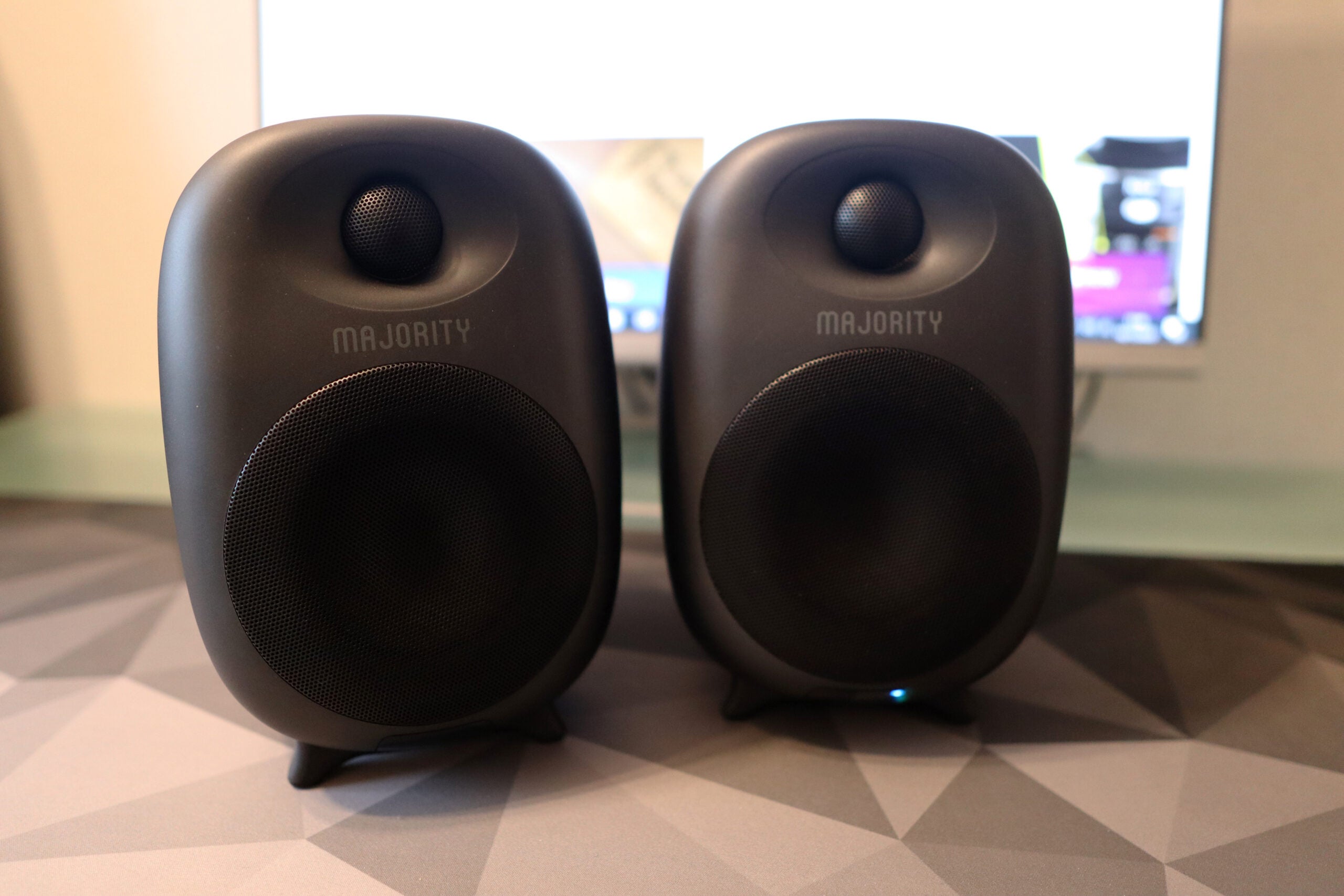Bowers and Wilkins Zeppelin Review
The Zeppelin wireless speaker makes a standout return


Verdict
The same unique shape but with more of a focus on streaming, the Zeppelin’s comeback is a worthy one with a terrific audio performance and slick streaming capabilities.
Pros
- Precise sound
- Plenty of streaming options
- Striking design
- Nice app
Cons
- Rather large to accommodate
- No Chromecast
- Stereo ambitions overstated
Availability
- UKRRP: £699
- USARRP: $799
- EuropeRRP: €799
Key Features
- BluetoothCan stream up to aptX-HD
- Smart skillsBuilt-in Alexa voice recognition
- Music appMusic app integrates streaming services such as Tidal and Qobuz
Introduction
The last Zeppelin speaker to emerge from the Bowers & Wilkins factory was in 2017, and the landscape of the wireless speaker market has shifted plenty in that time.
Nowadays, a premium wireless speaker that launches without a control app is considered a faux pas. Digital assistants have colonised homes, while the thirst for higher-quality audio has increased.
And so the Zeppelin returns to embrace the digital age. Alexa comes built in and the speaker is entwined with music services so it can be fed a diet of your favourite tracks and playlists.
Design
- Unique looks
- Needs space to operate
- Elegant, premium construction
You could trace the evolution of modern wireless speakers through the various iterations of the Zeppelin model. From the Zeppelin iPod speaker Dock to Zeppelin Air, Zeppelin Wireless and now Zeppelin, it’s advanced from a speaker with a physical dock to a wholly wireless experience.
So as the iPod docks of old were consigned to the history books, the new Zeppelin ditches physical ports altogether – there’s no 3.5mm jack and no Ethernet. Visually, the Zeppelin remains a looker, with contoured curves and premium fabric material merging to create its distinctive silhouette. The housing is an ultra-rigid, FEA-optimised enclosure sculpted to deliver a wide and spacious sound.
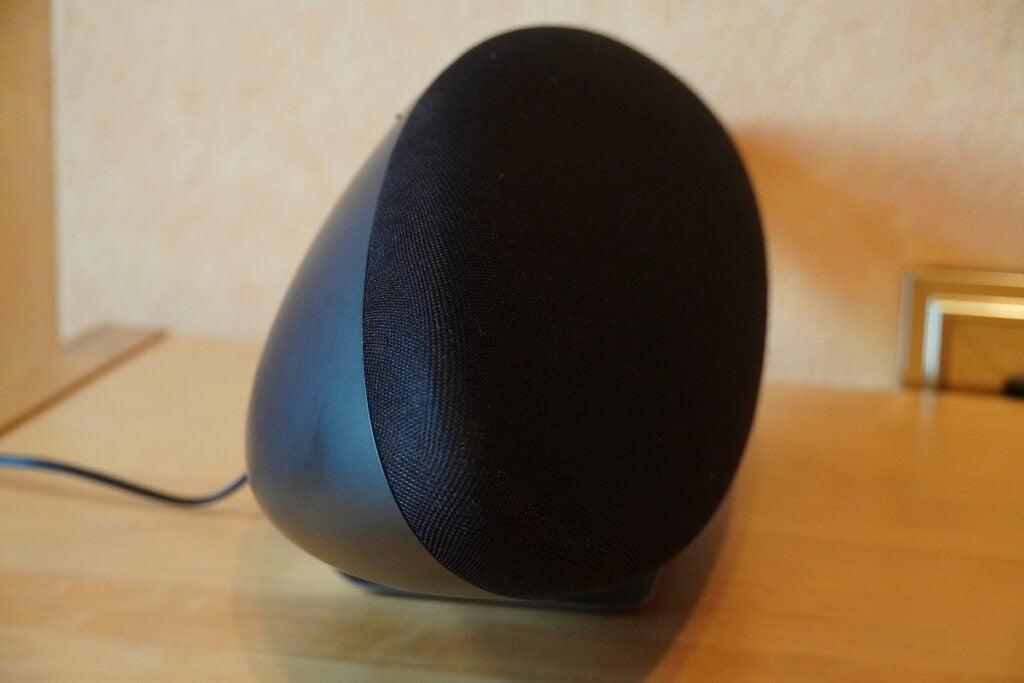
The stand is built in, and integrated into the underside of the body is a downward-facing LED light. The brightness can be adjusted in the app or switched off completely – after a period of inactivity it turns off anyway. At 650mm wide, the Zeppelin isn’t a wireless speaker that likes to share space. For more placement options there’s a £59 wall bracket.
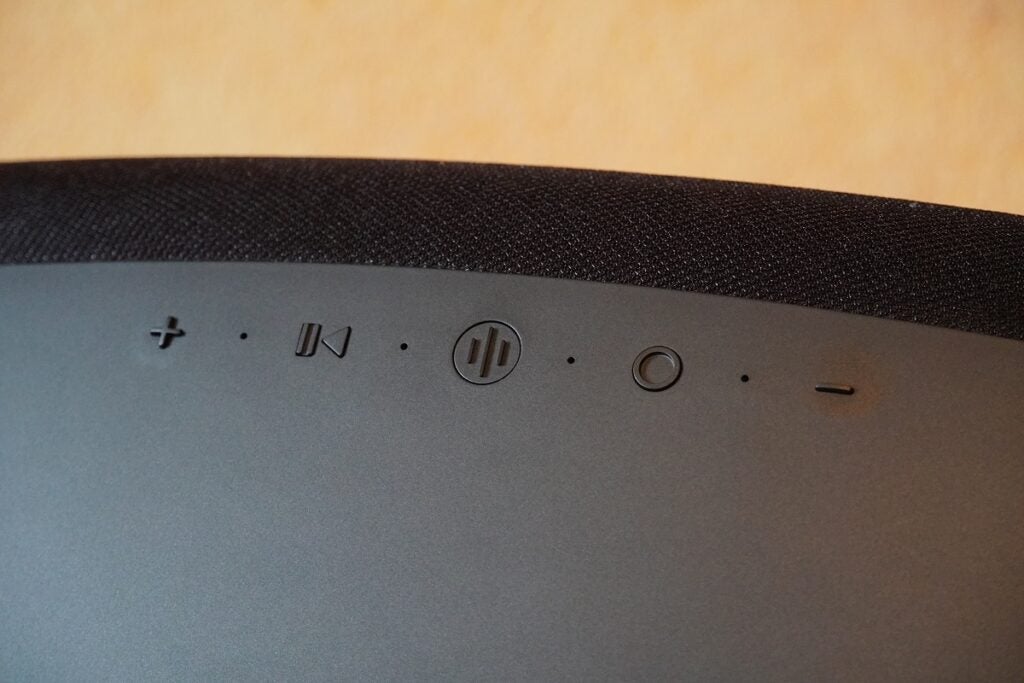
There’s no remote, so on the rear are playback, volume, Alexa Voice Service and Multifunction (MFB) buttons. The MFB can be used to set up the speaker, start a Bluetooth connection and it flashes to denote the speaker’s status. Hold the Voice Service button to turn off the microphones, if you crave privacy.
In the back of the stand you’ll find the power outlet, alongside a USB-C service port and reset button. The Zeppelin comes in midnight grey and pearl grey finishes, with the latter looking especially lovely.
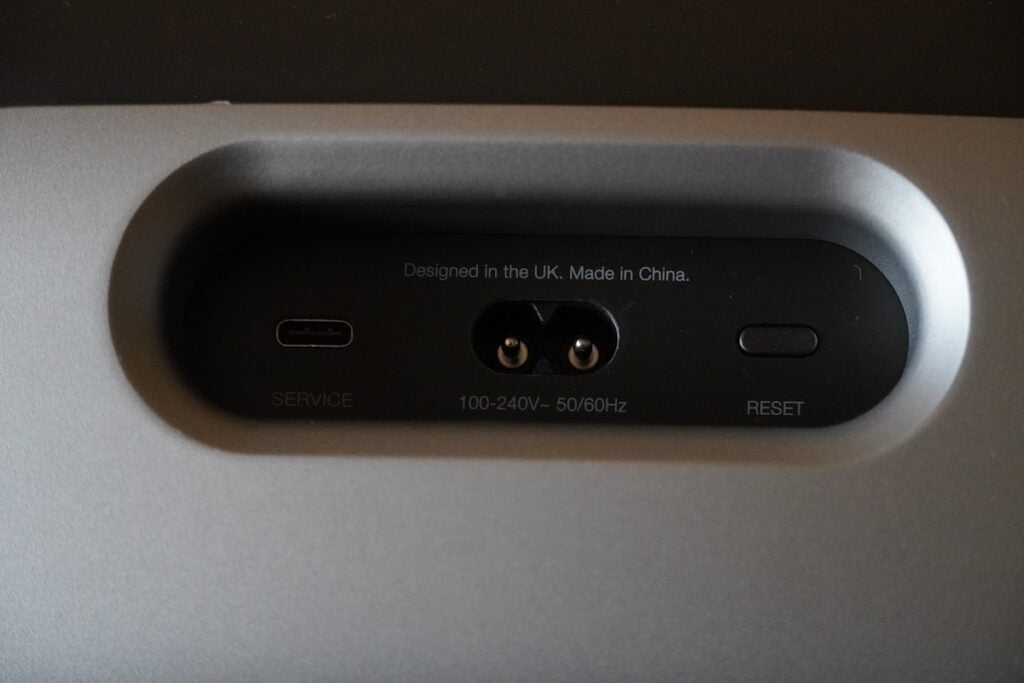
Features
- Slick and well-featured Music app
- Bluetooth, AirPlay 2, Spotify Connect support
- Alexa voice assistance
The Zeppelin is full stream ahead for features – but before I get to that, some details about what’s inside. For the high frequencies there are two 25mm double-dome tweeters, for the mid-range two 90mm FST (Fixed Suspension Transducer) drivers, and the low frequencies are handled by a 6-inch subwoofer.
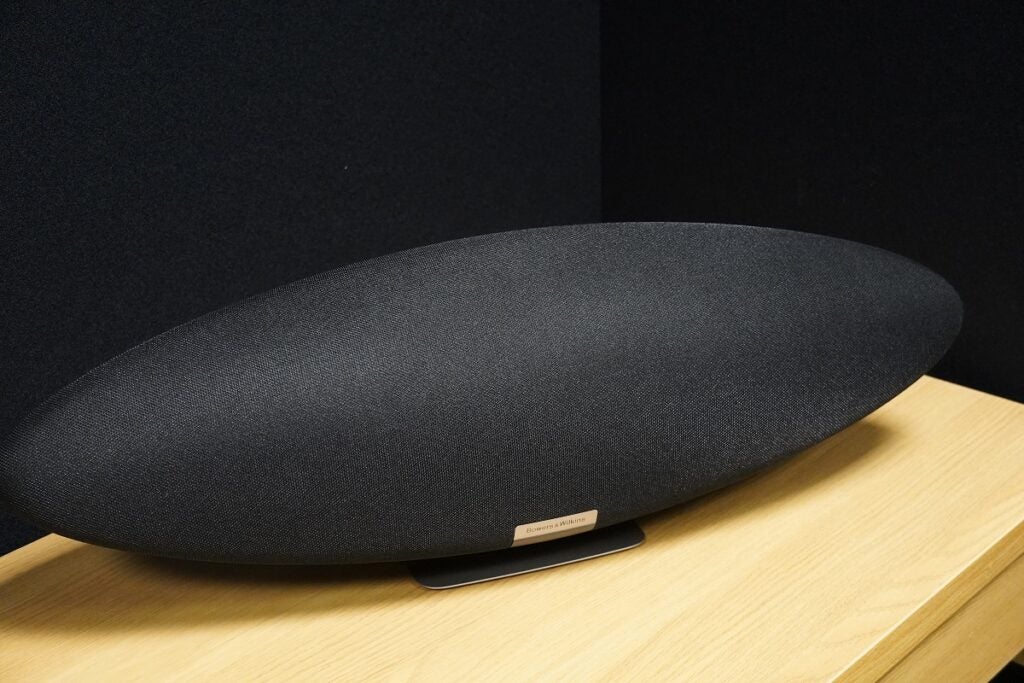
Driving all this is 240W of amplification, which is comparatively less than the similarly priced Naim Mu-So Qb 2 (300W). At its heart is a DAC capable of 24-bit/192kHz – although, currently, the resolution the Zeppelin accepts is 24-bit/96kHz, which could be raised through updates.
There’s AirPlay 2 for iOS devices (which also brings multi-room support) and aptX Adaptive Bluetooth (aptX-HD) for Android. Streaming services are served by Spotify Connect, with Deezer, Last.fm, Qobuz, Soundcloud, TuneIn and Tidal available to be linked to in the Bowers & Wilkins app. Spotify Hi-Fi will be supported when it launches, and with the Zeppelin’s upgradeable digital brain, more services can be added in the future.

The Bowers & Wilkins Music control app is more featured than the barebones Formation Home app from a few years back. It looks great on iPad Pro, slick in appearance and frictionless in use. The main page is organised into a row of recommendations, recently played content, followed by Bowers & Wilkins playlists and linked streaming services. There’s scope to adjust the speaker’s EQ by altering bass and treble from -6dB to 6dB.
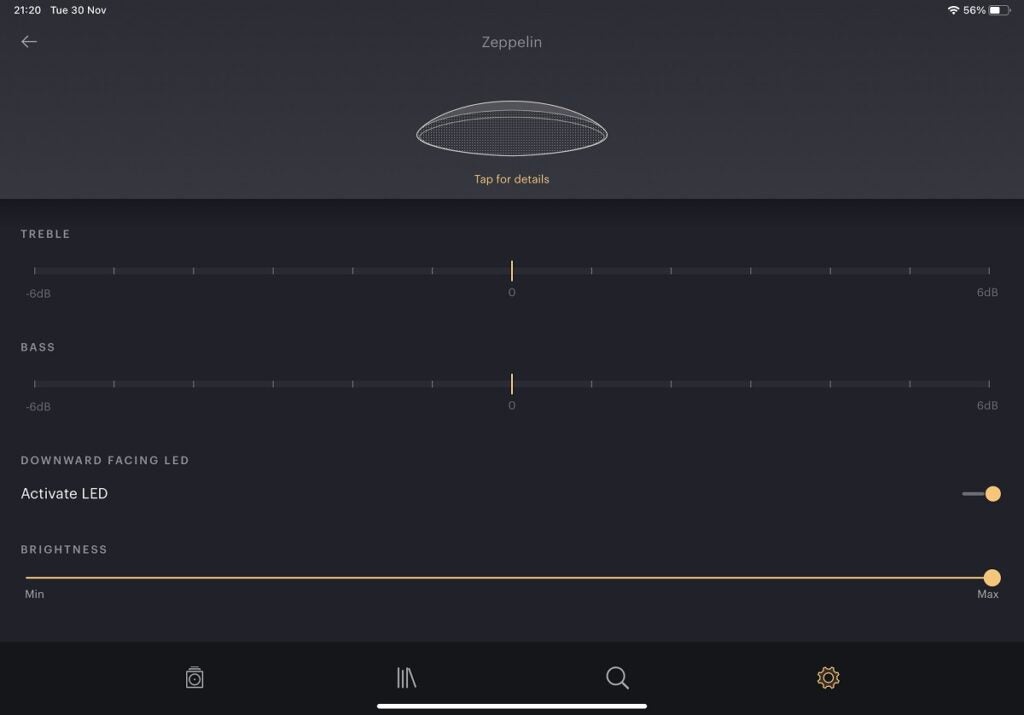
Playback in the app extends to play/pause, skipping and volume adjustment, with no ability to scrub forwards or backwards. While you can control content that’s playing in other apps – say, Apple Podcasts – they won’t appear in the recently played row, necessitating a jump back to the app to play something else.
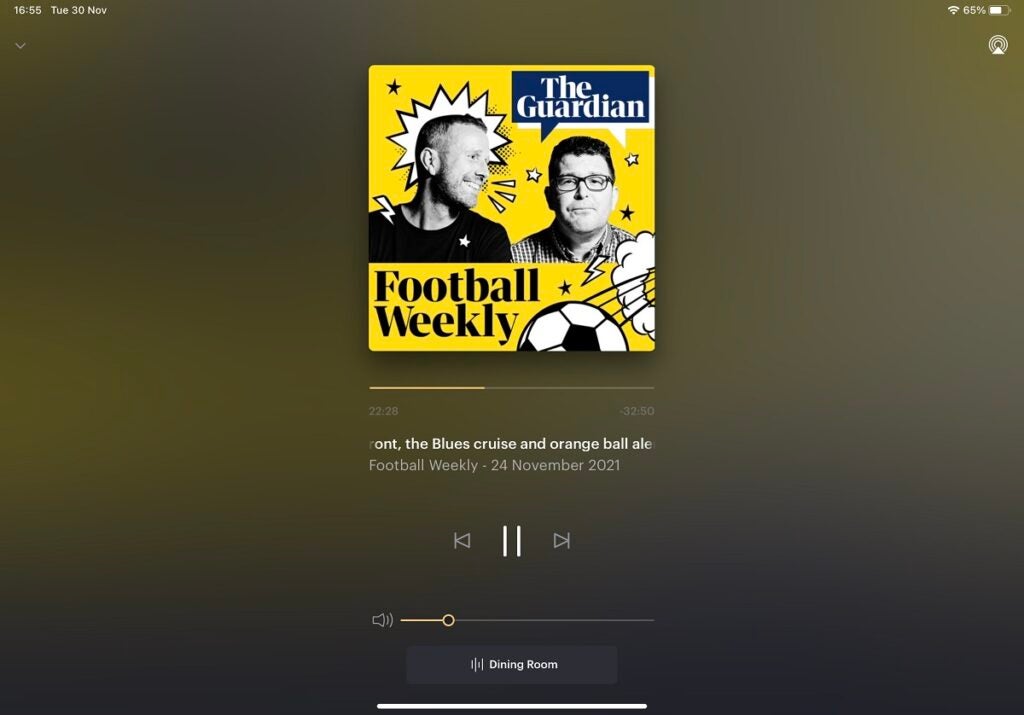
Alexa is built in, and when beckoned the recognisable blue light appears beneath the Bowers & Wilkins logo, the far-field microphones picking up requests from across the room. She can play music from services you’ve linked to in the Alexa app (Amazon Music and Spotify) – but even if you link Alexa to Apple Podcasts, her reach won’t stretch to unsupported apps.
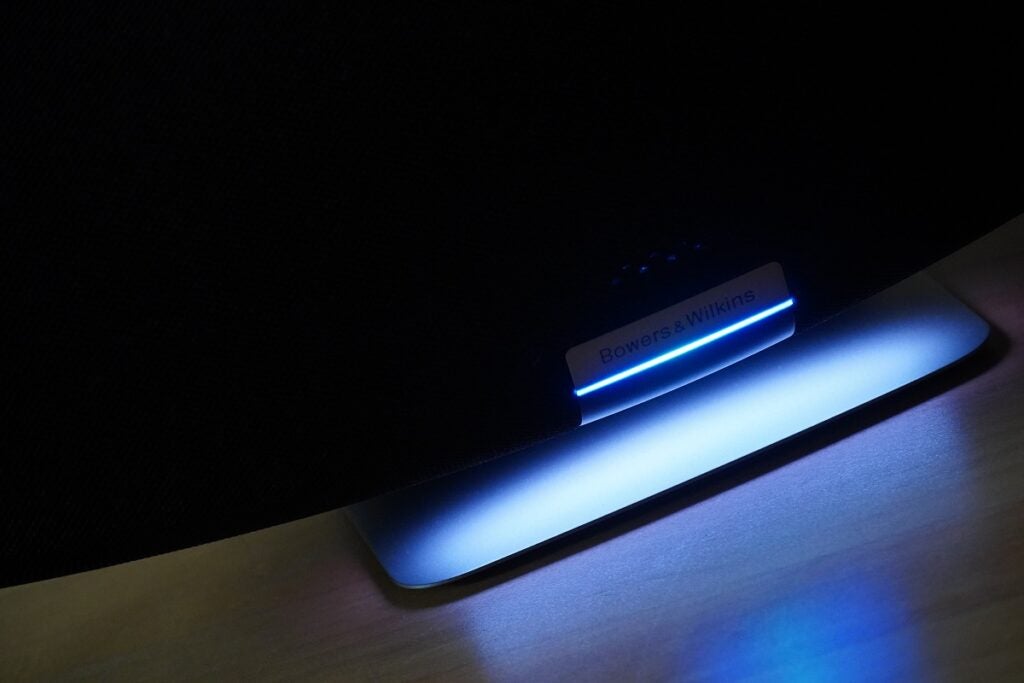
Initial setup takes a little longer than expected, and booting up isn’t instantaneous, either. Like a university student who’s had a night out, the Zeppelin requires some time to wake up. Nevertheless, the combination of the Zeppelin and Music app is an improvement over the Formation app, which is slowly being integrated into the Music app, and multi-room with Formation is still on track for early 2022.
If you hanker for DLNA or UPnP, they’re not currently supported and for the time being then Bowers & Wilkins seems content with the options offered, so don’t expect Chromecast or Google Assistant any time soon.
Sound Quality
- Big sound
- Deep bass
- Crisp, clear and sharp performance
The new Zeppelin markets itself as more of an all-in-one system than before, and it delivers a performance that’s in-tune with what we’ve come to expect from the series.
It strikes a rather neutral and precise tone – a sound stripped of fat and filtered to deliver a pure signal. It’s sharp and clear at the top end, with a firm and punchy low-frequency performance, and a mid-range that’s crisp and detailed.
It can easily go big and loud, its performance ably filling a medium-sized room; although the Zeppelin’s stereo image ambitions are rather overstated. The Zeppelin produces a big sound, for sure, but the bulk of the action happens in the middle, a sense of outright width wasn’t particularly evident in the music I played.
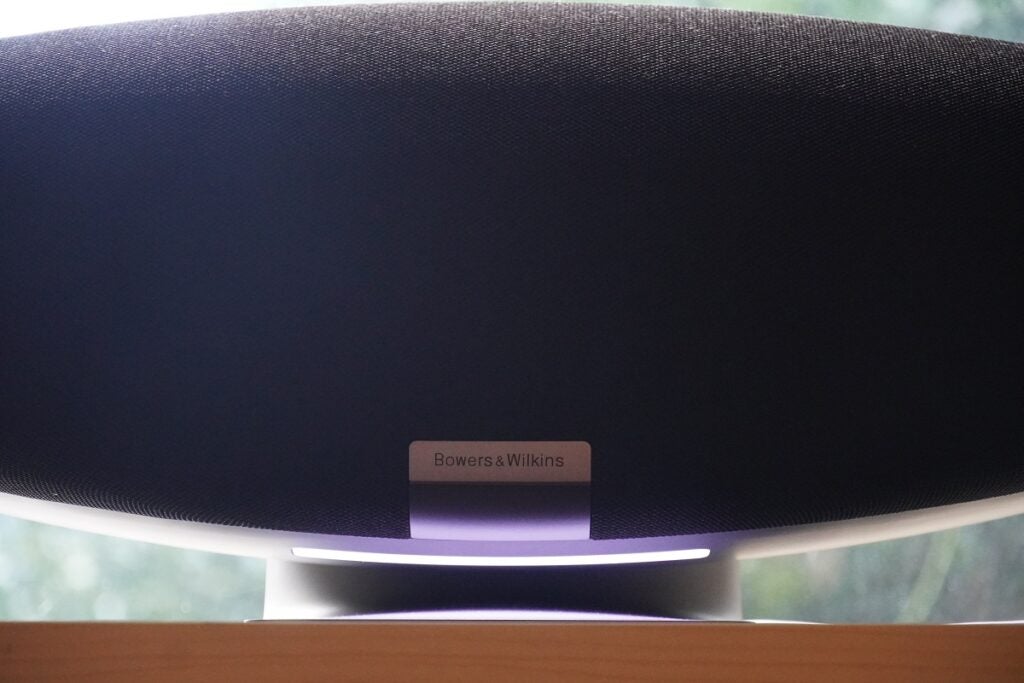
Vocals are reproduced cleanly, with clarity and fidelity. Obongjayar’s coarse and raspy voice comes out well in Frens, while Faye Webster’s quiet, trembling speech/singing comes across exactly like that.
You could possibly argue that the Zeppelin’s more stark approach robs voices of some emotional depth and warmth. Anya Taylor-Joy’s voice in Downtown Downtempo from the Last Night in Soho soundtrack is stripped clean and laid bare. However, a counter-argument is that the Zeppelin refuses to add any colour, preserving the subtle details and intonations for a revealing vocal performance.
Depending on the track, there are occasions where the Zeppelin gets too excitable. Its sense of organisation and rhythmic ability slip, with details – especially in the background – a little lost as the speaker gives prominence to vocals.

But it’s capable of some delicate subtlety and nuance. The piano in Joe Hisaishi’s Innocent sparkles with a tremendous sense of clarity and naturalism, as if the piano was right there in front of you. The speaker’s subwoofer outputs tremendous power: Kendrick Lamar’s Pride offers both punch, weight and depth, without ever becoming too hard or inflexible.
Dynamically, they’re insightful with plenty of difference from quiet and loud parts of a track, and they’re agile too: Ripples in the Sand from the Dune soundtrack produces an explosive sense of bass that contrasts with the ethereal and otherworldly voice that emerges from the track.
What width there is gives clarity to the separation to instruments in the New Masters/Keyon Harrold cover of This Is America, and when the song descends into chaos, the Zeppelin maintains control over timing and definition of those instruments, the speaker’s sense of rhythm undisturbed. The Zeppelin is a high-quality speaker and it has returned in some style.
Latest deals
Should you buy it?
For a clear, crisp and poised performer The Zeppelin delivers terrific sound – and, with the Music app, it’s easier than ever to play your music with little delay.
If you want Chromecast There’s currently no support for Google’s streaming connection, which may irk Android users who prefer Chromecast over Bluetooth.
Final Thoughts
The Zeppelin lives up to the high standards of the previous entries in the series, delivering an experience that satisfies both on the audio front and in usability terms with the Music app.
Some may pine for physical ports, but the streaming approach makes sense – and with the number of wireless sources and streaming services the Zeppelin plugs into, there’s enough to cover most people’s needs. Only the lack of Chromecast stops this from being a one-stop streaming system.
Regardless, the audio performance is big, loud and offers plenty of fidelity to bring your music streaming library to life. This Zeppelin showcases plenty of élan and an audio performance I’d class as terrific.
How we test
We test every wireless speaker we review thoroughly over an extended period of time. We use industry standard tests to compare features properly. We’ll always tell you what we find. We never, ever, accept money to review a product.
Find out more about how we test in our ethics policy.
Tested over several weeks
Tested with real world use
Tested with various streaming services
FAQs
At this moment in time, the Zeppelin does not support Chromecast.
SBC, AAC, aptX and aptX-HD.
At this moment in time, the Zeppelin doesn’t support these features.


